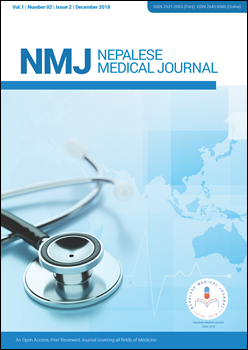Heart Rate Variability as a Marker of Changes in Mood State in Daily Life by Photoplethysmography Technique
DOI:
https://doi.org/10.3126/nmj.v1i2.21601Keywords:
Heart Rate Variability, Mood States, PhotoplethysmographyAbstract
Introduction: The different mood states in our daily life can affect our mental and emotional health. The aim of our study was to explore photoplethysmography to record heart rate variability as a marker of changes in mood states in our daily life.
Materials and Methods: Two groups of affective pictures categorized into positive and negative sets were shown to thirty subjects on two different consecutive days with simultaneously recording of heart rate variability for 5 minutes by photoplethysmography technique. Immediately after recording on each day, 0-9 self-assessment scale was used to assess the mood state of the subject after viewing the set of pictures.
Results: Sympathetic domains of heart rate variability like low frequency (200.3 ±4.1 vs. 166.7 ±2.8, p<0.05), low- and high frequency ratio (1.45 ± 0.21 vs. 0.55 ± 0.07, p<0.05) and low frequency (55.8 ± 2.9 vs. 38.6 ± 2.8, p<0.05) significantly increased in negative mood state condition as compared to positive mood state condition. High frequency (157.9 ± 3.9 vs. 264.3 ± 5.3, p<0.05) and high frequency (44 ± 2.9 vs. 61.2 ±4.2, p< 0.05) significantly increased in positive mood state condition as compared to negative mood state condition. There was significant increase in heart rate (78 ± 2.99 vs. 73 ± 3.11, p<0.05) in negative mood state as compared to positive mood state.
Conclusions: Increase in sympathetic activity during negative mood state and increase in parasympathetic activity during positive mood state measured by photoplethysmography technique validates this easy and noninvasive mental assessment tool to determine different mood states.
Downloads
Downloads
Published
How to Cite
Issue
Section
License
This license enables reusers to distribute, remix, adapt, and build upon the material in any medium or format, so long as attribution is given to the creator. The license allows for commercial use.
Copyright on any article published by Nepalese Medical Journal is retained by the author(s).
Authors grant Nepalese Medical Journal a license to publish the article and identify itself as the original publisher.
Authors also grant any third party the right to use the article freely as long as its integrity is maintained and its original authors, citation details and publisher are identified.




